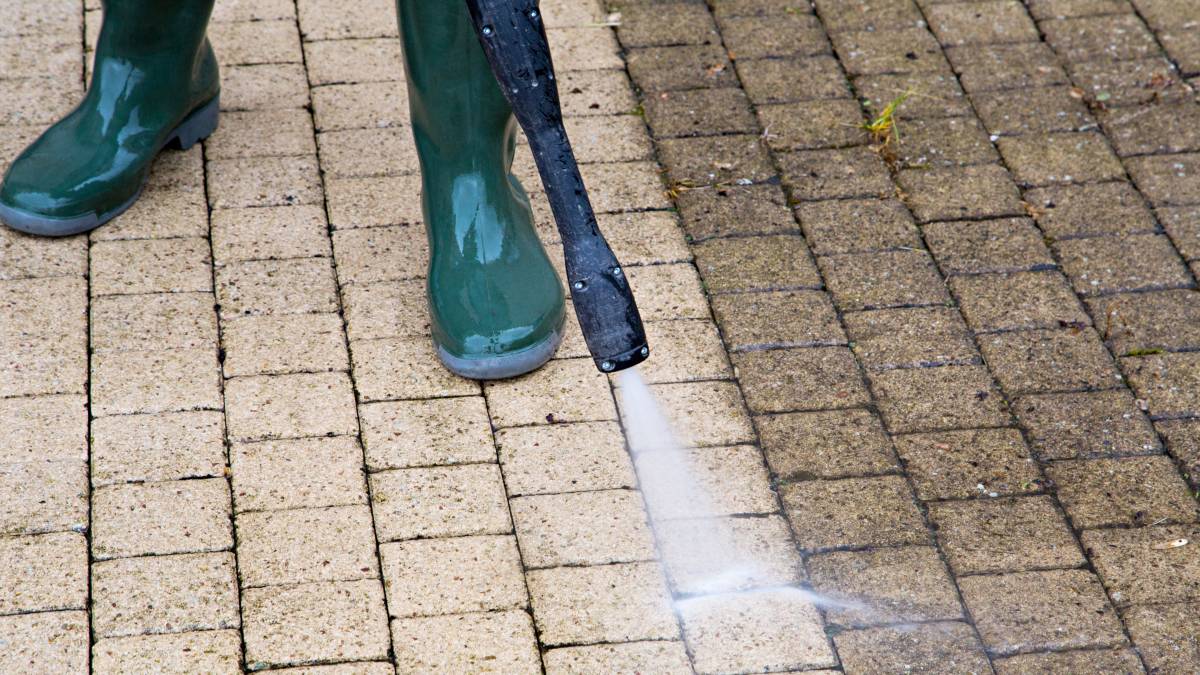Revitalize Your Home: The Ultimate Overview to Pressure Washing
Stress washing is a very useful tool for property owners aiming to bring back the visual appeal and long life of their properties. To navigate these intricacies and accomplish optimum outcomes, it is necessary to check out the fundamental facets of stress washing, including practical advice on making sure and addressing usual spots safety and security throughout the process.
Comprehending Stress Laundering
Pressure cleaning is a powerful cleaning approach that utilizes high-pressure water spray to get rid of dust, gunk, mold, and other impurities from various surface areas. This strategy is particularly efficient on tough surfaces like driveways, walkways, decks, and house siding, where traditional cleansing approaches may fail. By utilizing specialized devices that creates high-pressure streams of water, pressure cleaning can pass through deeply into surface areas, successfully removing and washing away persistent particles.
The procedure is not just efficient yet also eco-friendly, as it typically relies entirely on water, minimizing the demand for severe chemical cleansers. In addition, pressure washing can enhance the aesthetic allure of homes, maintaining their worth and extending the lifespan of surface areas by protecting against deterioration triggered by contaminants.

Picking the Right Tools
Selecting the ideal equipment is crucial for achieving optimal results in pressure washing. Gas devices, on the other hand, supply higher pressure and flow rates, making them ideal for larger tasks such as cleansing driveways or house siding.
Following, consider the stress rating, gauged in pounds per square inch (PSI) For light-duty tasks, a pressure washer with 1,300 to 1,600 PSI is adequate, while medium-duty tasks usually require 1,600 to 2,500 PSI. Durable tasks may necessitate machines exceeding 2,500 PSI.
In addition, the circulation rate, measured in gallons per min (GPM), affects cleaning efficiency (Pressure Washing Lockhart). A higher GPM enables quicker cleaning but might require more powerful devices
Techniques for Reliable Cleansing

The method of overlapping strokes is vital for also coverage. Furthermore, maintaining a consistent range from the surface area, typically 12 to 18 inches, permits for reliable application without causing harm.
Utilizing the right nozzle is also necessary. A wide-angle nozzle is optimal for larger areas, while a important link narrow nozzle can target persistent dust or grime. Additionally, making use of a go to this website sweeping motion rather than a stationary spray assists to prevent focused locations of stress, which might result in surface damages.

Taking On Common Spots
When it comes to keeping the appearance of outside surfaces, addressing common spots efficiently is vital for lengthening their life expectancy and enhancing visual appeal. Various surfaces, including concrete, plastic, and timber, can build up discolorations from organic materials, oils, and ecological contaminants, necessitating a targeted technique.
For oil stains, a combination of degreasers and pressure cleaning can yield exceptional outcomes. Apply the degreaser to the tarnished location, allowing it to permeate before using a pressure washer to eliminate the deposit. Organic stains, such as mildew or algae, frequently require a service including bleach or a specialized mold eliminator, followed by pressure cleaning to recover the surface's original appearance.
Rust stains, generally found on metal surface areas, may demand this link customized rust removers. Apply the product and scrub the area prior to pressure cleaning to get rid of any type of remaining discoloration. It is necessary to check any kind of cleansing option on a little, low-profile location initially to prevent damages.
Security Tips and Finest Practices
Making certain security while pressure washing is paramount, as the high-pressure water can pose substantial risks if not taken care of correctly. To safeguard on your own and others, always use appropriate personal safety tools (PPE), including safety goggles, gloves, and tough footwear. This equipment will certainly shield you from flying debris and the possibility for injury.
Prior to starting, check the pressure washer for any type of leaks or damaged components. Acquaint yourself with the devices's handbook to understand its operation and security attributes. Furthermore, ensure the area you are functioning in is totally free of obstacles and that any kind of electrical links are safe from water direct exposure.
When operating the pressure washer, maintain a safe range from surface areas and prevent aiming the nozzle at individuals, animals, or delicate items. Utilize the proper nozzle for the job, as different nozzles generate differing spray patterns and stress levels. Finally, bear in mind your environments: safe loose products, expect electrical lines, and prevent operating in wet conditions that may result in slides or falls.
Verdict
In conclusion, stress cleaning serves as an essential tool for house owners looking for to improve residential property aesthetic appeals and longevity. By understanding the ins and outs of equipment choice, efficient cleansing methods, and usual discolor removal, the capacity for renewing one's home ends up being evident.
Pressure cleaning is a powerful cleaning approach that makes use of high-pressure water spray to eliminate dirt, grime, mold and mildew, and other impurities from various surface areas. By using specialized equipment that creates high-pressure streams of water, stress washing can pass through deeply right into surfaces, properly dislodging and cleaning away persistent debris.
Nevertheless, it is crucial to understand that pressure washing calls for a specific degree of skill and expertise to prevent harmful surfaces. Softer products like wood or painted surface areas require a lower pressure establishing to protect against damages, whereas concrete or block surface areas can endure greater pressure levels.
Organic discolorations, such as mildew or algae, typically need a solution consisting of bleach or a committed mold and mildew remover, followed by pressure cleaning to bring back the surface's initial look. - Pressure Washing Lockhart